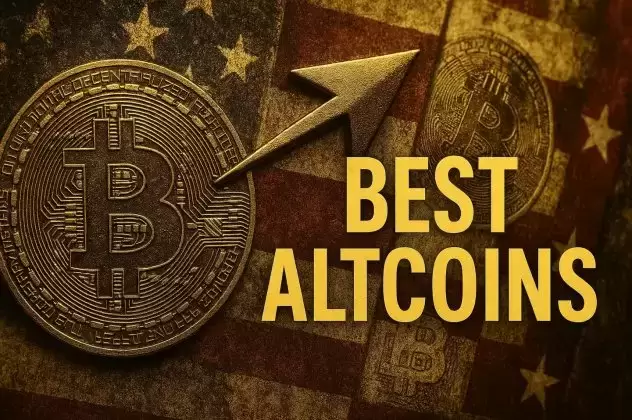 |
|
 |
|
 |
|
 |
|
 |
|
 |
|
 |
|
 |
|
 |
|
 |
|
 |
|
 |
|
 |
|
 |
|
 |
|

Layer-2 (L2) blockchains have emerged as a crucial component of the blockchain ecosystem, particularly for Ethereum. Some believe that L2s and their supportive functionalities hold the key to unlocking the full transformative potential of layer-1 (L1) blockchains.
Now, as we approach 2025, we must ask what the future holds for L2s and whether their promise to deliver fundamental improvements to speed, cost, and congestion will open the doors to wider blockchain adoption.
Over the next twelve months, we’ll see whether L2 technology can leverage its impressive start to become a truly decisive and user-friendly infrastructure. To get to the heart of that matter, we’ve invited several industry thought leaders to add their highly anticipated predictions.
If you had to pick between “consolidation” and “further fragmentation”, where do you see the L2 ecosystem moving towards in 2025?
“In 2024, several developer tools for L2 interoperability were released, most notably ZKSync's Elastic Chain framework and Polygon's CDK. In 2025, these tools will finally be available to end-users. However, not all cross-chain use cases will find product or market fit. Aside from token bridging, I expect swaps, borrowing, and perp trading to be the main DeFi primitives that will benefit from this interoperability.” - Ken Timsit, Managing Director at Cronos.
“In the evolving landscape of Layer 2 solutions, we are likely to witness a dual trend: consolidation among general-purpose L2s and increased fragmentation as more purpose-specific L2s emerge. Despite their potential, L2 chains are not yet mature enough to support the extremely high throughput needed for mass adoption. This is especially evident in sectors like gaming, where publishers may opt to operate their own L2s with native tokens, ensuring greater control over their ecosystems.” - Jack Vinijtrongjit - Co-Founder and CEO at Saakuru Labs.
Speed, Efficiency, Accessibility: Predicting Layer-2 Success and Shortcomings in 2025
Reimagining Financial Systems: What Does 2025 Hold for DeFi’s Ambitions?
MicroStrategy stock price rebounds after $200 million+ bitcoin purchase
“The rapid growth of new L2s just shows the need and demand for scalable, cost-effective solutions. However, as we’ve seen in 2024 and in the plans for 2025, it is leading to even more fragmentation in the ecosystem. This is inevitable, but it is creating more and more silos in the industry, which is problematic. Consolidation is the most sustainable path for the whole ecosystem, as this unifies tech, teams, minds and focuses collaboration towards hyper efficiency and interoperability. This is why the Apex Fusion project is novel, with a dedicated and scalable L1 based on the Bitcoin (UTxO) and Ethereum (EVM) models.” - Christopher Greenwood - Head of Programs at Apex Fusion.
Do you see a difference between Bitcoin L2s and Ethereum L2s?
“The use cases of Bitcoin L2s and Ethereum L2s are different. The primary use case of Bitcoin L2s is to offer extra yield to Bitcoin holders by providing economic security to other networks and collecting a tax from that activity. By contrast, the primary use case of Ethereum L2s is to enable users to invest in DeFi at a much lower transaction cost than on Ethereum while having the peace of mind that they can withdraw their assets back to Ethereum at any time if anything goes wrong. The difference in positioning is similar to how Bitcoin is viewed as a store of value simply by holding it, whereas Ethereum is more like an ecosystem of composable DeFi protocols where many types of assets are constantly traded and put to work.” - Ken Timsit, Managing Director at Cronos.
“The distinct ecosystems of Bitcoin and Ethereum are shaping divergent use cases for their respective L2s. On Bitcoin, we anticipate L2s will focus almost exclusively on DeFi applications, leveraging Bitcoin’s strengths in security and value preservation. In contrast, Ethereum’s versatile architecture will continue to drive L2s toward a broad array of applications, from gaming to social networks and beyond, cementing its role as the go-to platform for decentralized innovation.” - Jack Vinijtrongjit, Co-Founder and CEO at Saakuru Labs.
“Yes definitely! Bitcoin L2s, like the Lightning Network, focus on efficient, low-cost micropayments and financial transactions, more suited to Bitcoin acting as "digital cash." In contrast, Ethereum L2s, such as Optimism and Arbitrum, prioritise scalability for complex dApps, smart contracts, and DeFi. Apex Fusion bridges these paradigms by leveraging Bitcoin (UTxO) as a Layer 1 for stability and integrating high-performance L2s based on Ethereum for programmability and speed, uniting the best of
免責事項:info@kdj.com
提供される情報は取引に関するアドバイスではありません。 kdj.com は、この記事で提供される情報に基づいて行われた投資に対して一切の責任を負いません。暗号通貨は変動性が高いため、十分な調査を行った上で慎重に投資することを強くお勧めします。
このウェブサイトで使用されているコンテンツが著作権を侵害していると思われる場合は、直ちに当社 (info@kdj.com) までご連絡ください。速やかに削除させていただきます。
-

-

-

-

- SECは、2番目の暗号規制ラウンドテーブルの日付を発表します
- 2025-04-05 04:50:12
- 米国証券取引委員会(SEC)は、暗号規制に関する2番目の円卓会議が4月11日に行われることを確認しました。
-

-

-

-

-

- nft NewsFlash
- 2025-04-05 04:35:12
- 現在のビットコイン価格は$ 82K、ETHは$ 1.8K、XRPは2ドルです:https://tinyurl.com/4w5m5cfe



























































